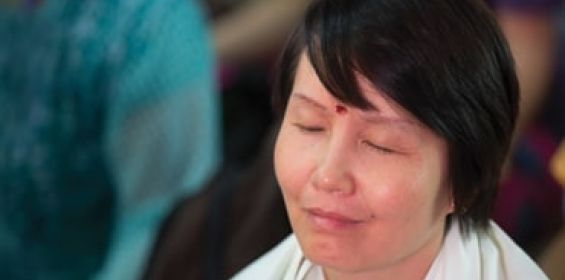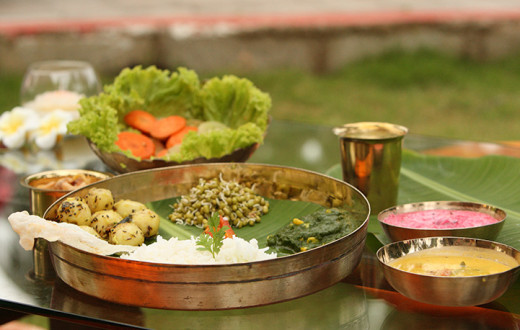A day with many names
Naraka Chaturdasi marks the second day of the five-day Deepavali festivities which include,
- Dhanteras
- Naraka Chaturdasi
- Deepavali
- Govardhan Puja
- Bhai Dhuj
This day has many names like Kali Chowdas, Rup Chowdas, Choti Diwali, and Narak Nivaran Chaturdasi.
As per popular versions of the Puranas, it was on this day that Sathyabhama, one of the eight principal consorts of Krishna, slayed the Naraka demon. This was on Chaturdasi, the 14th phase of the dark fortnight (Krishna Paksha) in the Kartik month of the Vikram Samvat Hindu calendar. And hence, this festival is known as Naraka Chaturdasi.

There is another version from the Kalika Purana which states that it was Goddess Kali who annihilated Narakasura. This day is celebrated as Kali Chaudas in some parts of India like Gujarat and Rajasthan.
Rup Chowdas is another name for this festival when people celebrate beauty.
This day is also known as Choti Diwali, coming a day before the main Diwali.
The Narakasura legend
Narakasura had a boon according to which he could be slain only at the hands of Bhu Devi, (Mother Earth). He forcefully abducted and married 16,000 maidens, and held them captive, fearing that anyone of them could be Bhu Devi in disguise. This asura went on a rampage across the world, spreading misery everywhere.
The citizens of his kingdom were very much troubled by the atrocities of Narakasura. Lord Krishna, accompanied by his consort Sathyabhama, fought a fierce battle with Narakasura and his forces, to put an end to the menace of this asura. Eventually, Sathyabhama, an incarnation of Bhu Devi, engaged in a duel with Narakasura and slayed him. The boon was thus fulfilled. Lord Krishna freed the 16,000 women and liberated Pragjyotispur from the tyranny of Narakasura. A legend commonly associated with the victory of good over evil.
Did Lord Krishna marry 16000 women?
An important event took place after Narakasura’s end. Naraka Chaturdasi is also the day when Krishna married 16,000 women. Did Lord Krishna really wed them? While some have revealed an inner significance to the story, others have criticized the Lord for taking so many wives. Others have still highlighted the magnanimity of Krishna.
When freed after Narakasura’s death, the group of 16,000 women wanted to commit suicide. The women told Krishna that they would never be accepted by society, having lived with a demon like Narakasura for so long, who had killed and tortured so many. And, it would be better for them to end their lives.

Krishna assured the women that he would honor them by “lending them his surname”. And henceforth they would not be known as “wives of Narakasura”. They would be able to live in society with full honor. Krishna bestowed new lives on these women and also gave them residences in Dwarka. The Lord had, in a way, sacrificed his honor to keep the honor of these women. This is one angle from which this selfless act of Krishna is viewed.
Sahasrara chakra connect
In our Tantric yoga traditions, sahasrara is the seventh chakra, the crown chakra located on top of our head. Among the seven sacred cities of India, Dwaraka represents sahasrara. This chakra is visualized as having 1,000 petals and each of these petals have 16 potencies (kala). The 16,000 consorts of Krishna stand for the 16,000 potencies of the sahasrara chakra. When the divine energy represented by Krishna rises to the crown chakra, these dormant potencies awaken. This is one way the practitioners of kundalini yoga have viewed this story of Krishna.
The phenomenon of Yogamaya
There is another mystical perspective from which this story is seen. In 69th chapter of the 10th canto of Srimad Bhagavatam, sage Narada wondered,
“It is quite astonishing that Krishna with his single physical body had married 16,000 women at the same time, in separate palaces.”
The sage visited Dwarka to see how Lord Krishna was managing such a large family. He was astonished to find Krishna simultaneously spending time with each of his thousands of wives. This phenomenon of Krishna manifesting in many forms is attributed to his yogamaya, whereby Krishna expanded himself yogically to marry and be with each of his consorts. It is interesting to note that this word yogamaya has the word maya, meaning illusionary and temporary.
Overcoming the three mayas
Three mayas are represented in the Narakasura legend.
- Narakasura for Mahamaya (ignorance)
Narakasura represents ignorance which prevents us from knowing the truth. He stands for Mahamaya which has its basis in Tamo guna. - Sathyabhama for Mohamaya (attachment)
Sathyabhama is known for her great attachment towards Krishna. As per the Tulabhara episode from Bhagavatam, she wanted to possess Krishna exclusively for her, flaunting her wealth. She however fails. Rukmini’s devotion wins over Sathyabhama’s attachment. Sathyabhama thus represents Mohamaya which has its basis in Rajo guna. - Krishna for Yogamaya (divine power)
Lord Krishna has revealed in the Bhagavad Gita that his divinity is covered by Yogamaya, and we need to overcome this maya to experience his true reality. Yogamaya has its basis in Satwa guna.
Naraka Chaturdasi is the day that reminds us to overcome these three mayas, so that we may light the lamp of wisdom on Deepavali.
Goddess Mahalakshmi represents maya and propitiating her is important in eventually going beyond maya. We welcome you to our live webcast on Mahalakshmi homa to be held on Naraka Chaturdasi (November 14)
Register for Mahalakshmi Homa
You could also register for the Dhanvanthri homa on Dhanteras (November 13)
Register for Dhanvanthri Homa
Inspired from the talks of Gurudev Sri Sri Ravi Shankar































